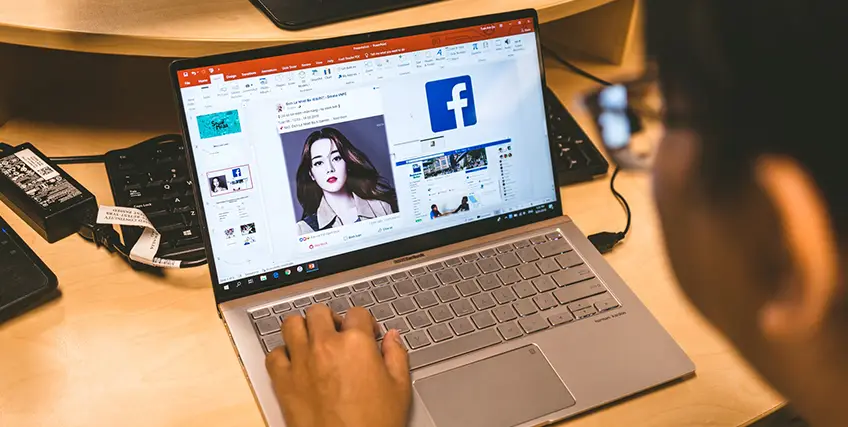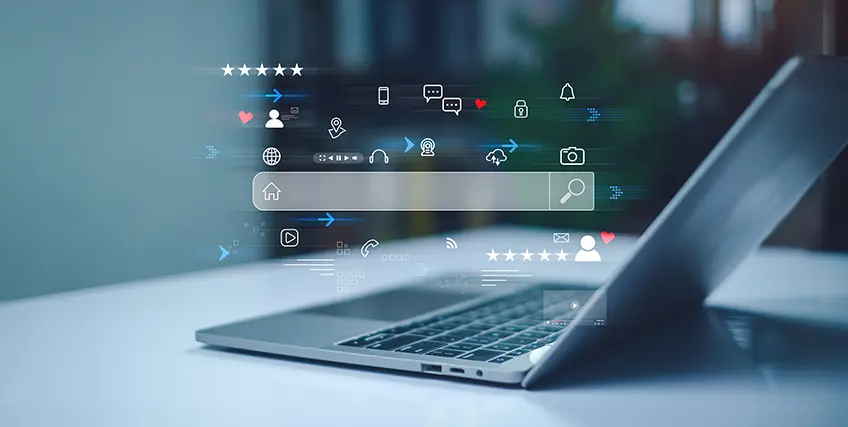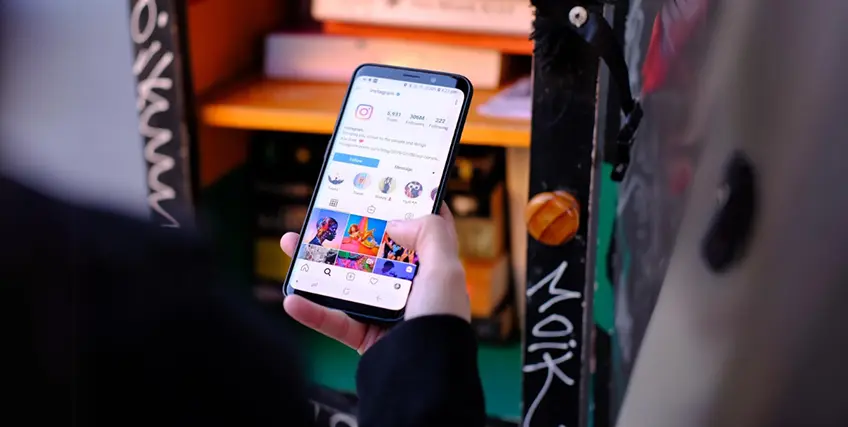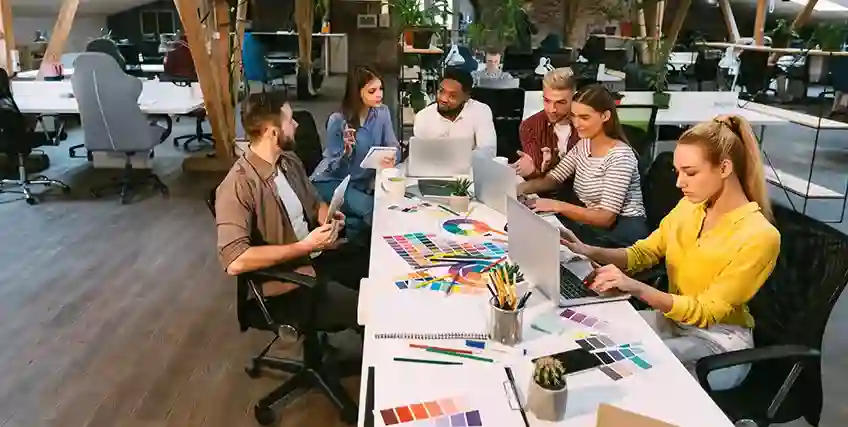Business Loans for Marketing:
How to Get Funding for Ads, SEO & More
Looking for Business Financing?
Apply now for flexible business financing. Biz2Credit offers term loans, revenue-based financing, lines of credit, and commercial real estate loans to qualified businesses.
Set up a Biz2Credit account and apply for business financing.
Business loans for marketing in the United States, help small businesses with the funding they need to grow. These financing options support digital marketing, ads, creative work, and other goals. A lender reviews a loan application to check revenue, credit, and plans. The funding amount depends on business performance and the chosen loan program. Many firms use support from the U.S. Small Business Administration to secure flexible terms. Lenders complete underwriting to confirm risk before approval. These tools make small business financing easier for owners who want steady, effective growth.
This page explains how business loans for marketing work and how they support business growth. It also outlines the main loan types, including SBA loans, term loans, and credit lines and how to select the right financing. Readers can know more about how applications for business loans for marketing move forward, and the common mistakes that often delay approval or lead to rejection.
What Are Business Loans For Marketing?
In the United States, business loans for marketing are a type of financing used to cover expenses like advertising, content creation, and SEO. These financing solutions offer capital for businesses, to invest in growth strategies they may not be able to afford otherwise. This includes launching new digital campaigns, growing operations, or drafting a long-term marketing budget. Various types of loans, including SBA loans, term loans, and lines of credit, can be used for this purpose, depending on the business's specific needs and timeline.
Types of Business Loans For Marketing
Common business loans for marketing include SBA loans for long-term growth, business lines of credit for flexible access to capital, and term loans for predictable repayment. Other options include working capital loans for day-to-day expenses, invoice financing to get cash from unpaid invoices based on future credit card sales.
Here's a list of business loans for marketing to fuel brand growth:
SBA Loans
Backed by the Small Business Administration, these loans often come with lower interest rates and longer repayment terms for qualified applicants, making them suitable for marketing initiatives.
- SBA 7(a) Loan: This is the most flexible SBA option. It can fund working capital, software tools, ad campaigns, and general marketing costs.
- SBA 504 Loan: This can be used for long term fixed assets, like real estate or large equipment. Not typical for marketing, but useful if the business needs major infrastructure or hardware.
Business Line of Credit
This loan gives a set amount of money borrowers can draw from, as needed. It's ideal for daily or unpredictable marketing costs because interest is paid only on the amount used.
Term Loan
A lump sum of cash you repay over a fixed period. It can be used for a specific marketing campaign or project.
Working Capital Loan
These cover short-term business expenses, which can include buying software subscriptions, launching ad campaigns and so on.
Invoice Financing
If the marketing services are billed through invoices, borrowers can get an advance on the value of those unpaid invoices, offering quick access to cash.
Business Credit Cards
For smaller marketing purchases, a business credit card may offer convenience and rewards, in addition to offering a short-term source of funding.
Other loan types to consider
Microloans
These are small loans (often up to $50,000) from non-profit organizations, which may have simpler qualification requirements.
Equipment Financing
While not directly for marketing, this can be useful if the marketing business needs equipment, like computers or tablets, for its operations.
Microloans
These are small loans (often up to $50,000) from non-profit organizations, which may have simpler qualification requirements.
Equipment Financing
While not directly for marketing, this can be useful if the marketing business needs equipment, like computers or tablets, for its operations.
Tips to Choose the Right Marketing Business Loan?
Choosing the right business loans for marketing is crucial to grow further in the industry. Applicants first should understand the business needs to determine the correct loan amount, then compare lenders based on fees, and eligibility requirements. Further, exploring different loan options, like SBA loans or lines of credit, is another key step. Here's a common guide on how to choose the right business loans for marketing:
01 Understand needs and eligibility
- Calculate the exact cost: Create a detailed budget for the marketing campaign to determine the amount which is needed. Avoid over-borrowing, to repay the lender comfortably.
- Check eligibility: Many lenders typically check both business and personal credit scores, revenue, time in business, and industry.
- Prepare documents: Gather necessary materials, including tax returns, bank statements, and financial projections. A solid business plan is also important, especially for startup capital.
02 Compare lenders and terms
- Interest rates and fees: Look beyond the interest rates to identify hidden costs, like processing fees, pre-payment penalties, or late payment penalties. A lower interest rate saves money but a higher-cost loan with lower fees might be more cost-effective.
- Lender requirements and reputation: Compare lenders' eligibility criteria. Some alternative lenders may have simpler requirements and quicker approvals than traditional banks.
- Repayment schedule: Ensure the monthly payment schedules are in line the business's expected cash flow. Use a business loan calculator to estimate payments with different loan amounts and terms.
- Secure multiple quotes: Get quotes from several lenders to compare their offers, fees, and repayment terms, before reaching a final decision.
How to Use Business Loans For Marketing?
Business loans for marketing can be used to launch paid campaigns, invest in search engine optimization, improve content marketing, and upgrade marketing tools. It can also fund customer retention activities, like introducing rewards programs, and help build customer relationships through events or webinars. Below are the common uses of business loans for marketing.
Launch marketing campaigns
- Run paid advertising: Use funds for paid advertising campaigns, on platforms like Google, Facebook, or LinkedIn.
- Invest in content marketing: Create high-quality blogs, videos, and other content to attract target audience.
- Boost SEO: Improve search engine rankings by investing in SEO services, technical audits, or a new Google Business Profile.
Improve tools and infrastructure
- Upgrade marketing software: Purchase or subscribe to marketing automation platforms, for emailers and social media management.
- Acquire new technology: Buy the latest analytics and CRM software relevant to the industry, to better understand and manage customers as well as campaigns.
- Hire talent: Invest in hiring marketing specialists to improve creative output or manage new strategies.
Engage and retain customers
- Build community: Business loans for marketing can be used to host webinars, community meetups or sponsor local events, to connect with potential and existing clients.
- Run loyalty programs: The capital can fund customer rewards programs, referral bonuses, and other incentives to encourage repeat use.
Measure and optimize
- Track ROI: After implementing the new strategies, the business loan can be used to measure the return on investment and adjust accordingly.
- Refine campaigns: Use the insights gained from new tools and analytics, to optimize the current and planned campaigns for better performance.
Business Loans for Marketing: Who is Eligible?
Eligibility for business loans for marketing depends on several factors, including personal and business credit scores, time in business, and annual revenue. A strong business plan, collateral, and a healthy cash inflow-outflow are also crucial. However, eligibility also depends on the loan and lender type; so, terms and conditions may vary. Below are the typical eligibility criteria for getting a marketing business loan:
Credit score
Most traditional banks require an above average or high credit score, while online lenders may have lower requirements.
Time in business
Many traditional loans may need at least two years of business history. But some online lenders may consider new businesses, that have been operating for at least six months.
Annual revenue
Lenders assess a business's revenue to ensure it can support loan repayments.
Business plan
A detailed business plan is essential to show lenders the marketing strategy, financial status, and repayment plan.
Collateral
Some loans, particularly larger ones, may require collateral such as real estate, equipment, or inventory.
Cash flow and debt-to-income ratio
Lenders evaluate a business's income and cash flow, as well as calculate their Debt Service Coverage Ratio (DSCR) to determine their debt repayment ability.
Business Loans for Marketing: Tips to Apply?
To apply for business loans for marketing, applicants need to take a few key steps to secure the loan successfully. This includes preparing a business plan, updating financial records and then applying for the right loan type. Here's a list of common steps to take, when applying for business loans for marketing:
Mistakes to Avoid When Applying for Business Loans for Marketing
When applying for business loans for marketing, there is a list of common mistakes that should be avoided. This includes not thoroughly researching lenders, miscalculating funding needs, applying with a poor credit score, or not having a clear repayment plan. So, before submitting an application for business loan marketing, check this list of mistakes to avoid:
Before Applying:
- Research each lender's eligibility criteria, such as credit score, revenue, and time in business, before submitting an application to avoid getting rejected.
- Choose between debt (loans) and equity financing based on the business's profit quotient and risk tolerance.
- Consider whether a traditional business loan, a line of credit, or a personal loan is best for the current needs, based on the amount needed and creditworthiness.
- Have all necessary documents ready, such as tax returns and registration certificates, because the lenders need to know that the applicant meets the lender's requirements.
During The Application:
- Avoid sending out multiple applications, as this can hurt credit score.
- Avoid over-borrowing, which may lead to paying interest on funds that are not needed. Even under-borrowing, may not be a wise choice, as it can strain personal cash reserves.
If approved:
- Ensure there's a plan related to making monthly payments, especially if the customers have a slow payment cycle.
- Be aware of collateral needs, as some lenders require it, which could be business assets or even personal property.
Right Funding, Right Strategy Leads to Predictable Growth
Business loans for marketing give business owners and aspiring entrepreneurs a practical method to move ahead, without heavy upfront costs. These loans support campaigns, tools, and digital marketing plans, helping brands reach the right people at the right time. With many funding options available, small business owners can choose a loan program that matches their needs, repayment ability, and expected funding amount.
A clear loan application, steady bank account history, and strong plan help lenders complete underwriting with confidence. Support from the U.S. Small Business Administration also makes small business financing within reach. Many small business loans now offer competitive rates, flexible schedules, and smoother paths to approval. This gives every business a fair chance to get the right business funding.
In the end, business loans for marketing do more than cover costs. They help businesses tell their side of the story, solidify engagement, and build long term visibility. When the right funding meets the right strategy, growth becomes not only possible but predictable.
Trusted by Thousands of Small Business Owners in America.**
Simply because we get what you go through to build a business you believe in.
**Disclaimer: All stories are real, as told by real business owners. Customers do not receive monetary compensation for telling their stories.
From One Entrepreneur to Another: We Get You
We understand what's behind building a business you believe in.
All stories are real, as told by real business owners. Customers do not receive monetary compensation for telling their stories.



Articles on Business Loans for Marketing
Drive More Sales Using Facebook Marketplace as Your Local Selling Platform
In the ever-evolving world of ecommerce, business owners constantly seek reliable, accessible avenues to promote and sell their products.
Local SEO for Small Businesses: 7 Ways to Invest in Organic Growth
Small businesses across the U.S. are relying more on search engine optimization (SEO) to drive organic traffic and increase brand visibility but
Invest in Instagram for Your Business: A Guide for SMBs
Do you know that about 20 years ago, you only needed to have a brick-and-mortar location, a good reputation, and some print advertising
How to Start a Dropshipping Business in 4 Steps
If you want to start an online business and sell new products, you may be turned off by high costs and inventory management.
How to Start an Ad Agency
Like any small business, starting a digital marketing agency requires more than expertise in the advertising industry.
FAQs About Business Loans for Marketing
1. Do marketing loans require collateral?
Collateral requirement for business loans for marketing, depends on the loan type and lender. Secured loans typically require collateral, such as a blanket lien on assets, equipment, or real estate. SBA loans may also require a personal guarantee from owners with a significant chunk of ownership stake.
2. What are the requirements to get business loans for marketing?
Lenders typically check both personal and business credit scores, annual revenue, and time in business. They may also review bank statements and past marketing results. A clear plan showing how the funds support growth improves approval chances.
3. What loan is best for marketing costs?
A business line of credit works well for ongoing or unforeseen marketing costs while term loans suit fixed campaigns with defined budgets. SBA 7(a) loans support wider marketing needs. So, it all depends on the needs and eligibility of the business.
4. How does personal credit score affect eligibility?
An applicant's personal credit score is an important factor in a lender's decision, especially for small and newer businesses. Most lenders typically review personal and business financial history to assess creditworthiness.
5. Can business loans be used specifically for marketing?
Business loans can be used for various expenses. This includes putting money into marketing strategies, like social media campaigns, email marketing, or search engine optimization. Lenders generally want to see how the funds will be used to generate more cash flow to repay the loan.
Frequent searches leading to this page
Term Loans are made by Itria Ventures LLC or Cross River Bank, Member FDIC. This is not a deposit product. California residents: Itria Ventures LLC is licensed by the Department of Financial Protection and Innovation. Loans are made or arranged pursuant to California Financing Law License # 60DBO-35839





